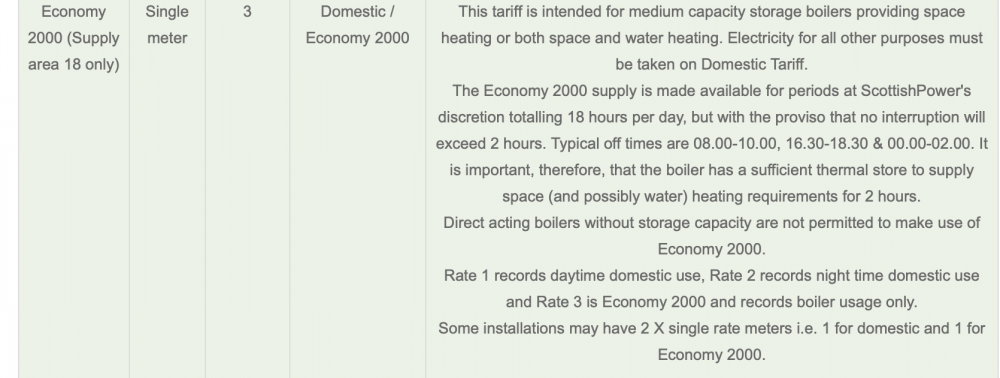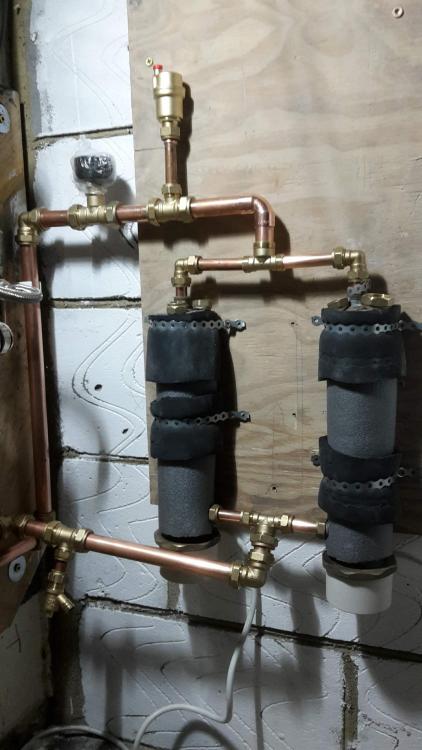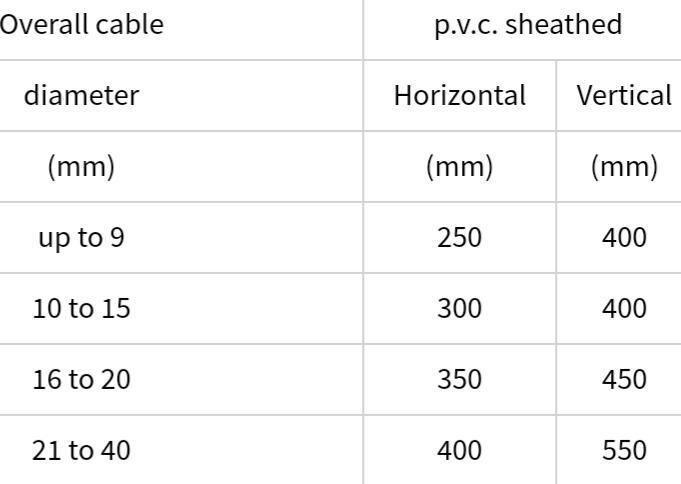Leaderboard
Popular Content
Showing content with the highest reputation on 02/06/20 in all areas
-
I am about a month behind the schedule in my mind. My signing-up with a timber-frame company was delayed as my favoured company moved their factory over Christmas. In the end I seriously considered no less than seven frame companies, met with five, and visited the factories of four. I have now chosen the company and will be signing on the dotted line soon. It is a local Cambridgeshire firm and represented for me the best balance between cost, their approach, and the personalities involved. Observations from the last month: Old Buildhub searches work well. I have text shortcut the throws the following in to a google search: "site:buildhub.org.uk". That enables effortless searching of the Buildhub archive for any string. For example, when thinking about which SE to use to design my slab, I threw "site:buildhub.org.uk Tanner" into Google a re-read the posts by @Alexphd1, @Triassic, @RichC and others, some of which were years old, arranged a call with Hilliard himself in Ireland, and all my problems went away. Same applied for bolstering my list of raft installers and a host of other subjects besides. I looked again at the make-up of my roof and foundations. My dwelling has a ridge height limit in its deeds and I want high, 3m, ceilings. I went around the houses on both subjects (thanks to you all for your contributions to my threads on the subjects). On the roof I ended up somewhere new, and flipped form a cold to a warm room, and saved about 200mm. On the floor, I ended up back where I started, with an insulated concrete raft attached to screw piles but, with the help of Hilliard Tanner, it will be a thinner 100mm raft, with strengthening ribs, and a 200mm ring beam. Because the raft will be tied-in to the screw piles the insulation beneath will not be load bearing. This means that PIR will work just as well as EPS as insulation. PIR is thinner for a given U-value so once again I will be saving about 200mm of thickness. Resolving the issues the ridge and front-door-threshold heights then enabled me dive deeply in to the levels. I have a small but complex plot and deciding levels took quite some head-scratching, especially as my site is supposedly "no-dig" because of previous tree roots. Levels are now done I think. With all the fundamental decisions about the build now resolved, the cavalcade of actions leading up to the start on site can now begin in earnest: frame design, engineering inputs, construction drawings; planning-conditions discharge (and maybe non-material amendment); tenders for groundworkers, screw-pile suppliers and installers, raft makers, rooflights, windows; site insurance, building control, warranty. Oh, and I have re-designed the façade once again. All systems go! Spirits are high.5 points
-
Just to close this off, I swapped out the old Netgear router this afternoon for a better (but still really an affordable option) Asus RT-AC66U B1, that cost a bit under £100 delivered (as much as I wanted to pay, really). This seems to have completely fixed our Wi-Fi problems, with my laptop showing a solid 5 bars of signal everywhere in the house, and the car showing 4 bars out on the drive. Best of all, for some completely bizarre reason, our broadband speed has improved by about 50%. I can't get my head around this, as we're still using the same VDSL modem, so all the router is doing is providing DHCP etc. I can't for the life of me see how that can change the broadband speed, but it definitely has (I've done four tests now, and all were much the same). Best of all is that SWMBOs iPad has now connected at 5 GHz (not sure why it never did this when I had 5 GHz enabled on the old router) and she's reporting that it's running a lot faster. Pretty impressed with the Asus, for what is still really a budget router. Dead easy to set up, although the set up doesn't make it that clear as to how you can set the DHCP IP range (needed to change it as we have a few things that only work properly with a fixed IP). My only other criticism is that the router admin page is hopeless at identifying all the connected clients, which led to me having to run IPscan just to check that everything in the house was connected. The router also seems to have some pretty bizarre DHCP rules, as it has set IPs all over the place in the sub-net. Never had one do that before, they usually seem to allocate dynamic LAN IPs from the bottom up, starting with the first device to come alive.2 points
-
It may have been like the Tesla granny charger. That can charge at up to 32 A, and has a 5 pin waterproof connector at the mains in side, that takes a variety of different short adapter leads. The car comes as standard with a 13 A plug lead and a 16 A commando lead, and sets the charge current to 10 A when the 13 A lead is used and 16 A when the commando is used. Tesla sell an optional 32 A commando adapter lead for ~£40 and when this is fitted the granny lead will charge at 32 A.2 points
-
1 point
-
Yes Peter I use quite a bit of Fernacell Mainly render I’ve D&D with them also But they still need to be mechanically fixed I normally lay a three mil coat of car lite bonding on with 10% board finish mixed in Then render mesh laid on and flattened in and skimmed with multi the same day This method gives a 100% guarantee against cracking or blowing and leaves no trace of the knock ins Hope this helps Peter1 point
-
If it's Alternative A PoE I don't think it matters, as that voltage is super imposed on the data pairs, as a common mode voltage. If it's either Alternative B PoE or the sort of bodged PoE down the spare pairs that I'm using to power some stuff, then it won't work. It also won't work for Gigabit connections, as they use all 4 pairs in the cable, whereas 10-100 only uses 2 of the 4 pairs. Not sure that there are any real applications for Gigabit Ethernet in a domestic scenario, though, given that it's massively faster than any likely external internet connection.1 point
-
1 point
-
1 point
-
I put in 8 Ethernet cables and really should have doubled every run, as there have been a couple of times I could have done with two connection instead of one. I'm inclined to agree that you can't have too many Ethernet cable runs, especially as the cable is pretty cheap. BTW, I think @Onoffs post about minimum cable clip spacing may have gone "whoosh" overhead. . . (hint: Those cables need to be tidied up and clipped properly, in accordance with Appendix D of the OSG and also, perhaps, Section 522.10 of BS7671:2018)1 point
-
My take is I installed a fair few cat5 cables just in case. They remain labelled but unterminated. When I find a use for them I will terminate the ends. So far ONE is in use with one more I have a foreseeable use for.1 point
-
@Declan52 For the finish I was hoping to have a small 'lip' type overhang that I can possibly have lights in. But essentially a facia it think. @Carrerahill the lines is a good idea thanks. I will also make a note I need to consider the plasterboard and finish to make it level with existing. Thanks.1 point
-
This illustrates well how an individual usage pattern can make a massive difference to the best choice. For us, Agile would have cost £68, Go would have cost £76 and our existing E7 cost £57. The problem for us with Go, and to a lesser extent Agile, is that we tend to need the cheap rate for the full 7 hours of the E7 period. Car charging, in particular, doesn't fit well with either Agile or Go. 4 hours at the maximum charge rate of 7 kW is only just over 1/3rd of a charge for the car, and I can often need a bit more than that after a day out somewhere. The UFH also needs more than 4 hours to get enough heat into the slab. If I increase the flow temperature to reduce this time the room temperature tends to overshoot a lot the next day.1 point
-
1 point
-
Many thanks chaps- job done/ looks fabulous too: hours to get out, a breeze to fit tho. Very minimal dmg to beads- great. zoot1 point
-
There's also the consideration that warm-air heating will increase the ventilation heat losses. The perceived temperature is, roughly, the average of the actual air temperature and the radiant temperature of the surroundings. If you're heating the air directly then the air will be a little bit warmer than the walls, floor and ceiling because of the interface resistance so the air will need to be about half as much warmer than the required perceived temperature. Using radiant heating (UFH particularly where about half the heat emitted is via radiation or radiators where it's maybe a sixth [¹]) means that air can be a tad cooler than the wanted perceived temperature so ventilation heat losses will be smaller. With heat-recovery ventilation this will not be a lot, but as @Jeremy Harris shows the difference with UFH is small, too. [¹] Longer discussion: https://edavies.me.uk/2014/08/radiators/1 point
-
I took delivery of these yesterday - tempted by the £50 off (valid to 9th February) https://www.amazon.co.uk/Security-eufyCam-Wireless-Weatherproof-Compatible/dp/B07W4MY7HL/ref=sr_1_3?crid=XK41J3NB2EXU&keywords=eufycam+2c&qid=1580983683&sprefix=eufy+cam%2Caps%2C137&sr=8-3 I wanted something portable that I could move around as we move into the new house. These seemed to fit the bill although a bit of an impulse buy. There is on board storage in the hub so no need for a cloud or subscription if you don't want to, they are Homekit compatible and I read somewhere that they will be upgraded to HomeKit Secure Video in future. Easy to set up, easy to use App. I think the issue may well be battery life - this model (2C) promises 180 days before you have to take them down and recharge them but I'll believe that when I see it. The Eufy 2 promises 365 days of battery life but I didn't want to pay £150 more for them.1 point
-
1 point
-
Although UFH is always less efficient than a heating system like radiators or warm air, because it increases the temperature differential across the floor insulation, and hence increases the heat loss, it is worth putting some real numbers in to a typical case to see the impact of that. Increasing the floor surface temperature to 23°C with a room temperature of 21°C, and a ground temperature of 8°C, delivers about 18.8 W/m² of heat to the house, more than enough to keep a reasonably well-insulated and airtight house warm in cold weather. Assuming a floor U value of 0.11 W/m².K, then the additional heat lost to the ground by having the floor surface at 23°C rather than close to room temperature, 21°C, is ~ 0.22 W/m². The total heat loss through the floor will be about 1.65 W/m² with UFH, or about 1.43 W/m² without UFH (for the case above). If heating the house with a heat pump, with a COP of 3 and an electricity cost of £0.16/kWh, then the additional heat loss from losing an extra 0.22 W/m² in cold weather (the loss will be a lot less in mild weather) would be about £0.0026/m²/day. So for a 100m² heated ground floor area the additional cost would be about £0.26/day (in cold weather). Averaged out over the heating season the additional cost is likely to be around 1/3rd of this, maybe a fair bit less, (based on our experience of the ratio between the average and peak heating requirement in winter). The question is then whether that is a price worth paying or not. For our house, with ~75m² of ground floor UFH and an annual heating requirement of about 1,550 kWh, the additional cost of using UFH over the warm air system we have (but don't use) is about £0.85, in terms of paying for the additional heat loss the UFH creates. One advantage the UFH gives us is that it allows us to heat the floor slab using E7 electricity overnight, so it acts as a storage heater through the day. That does mean that, allowing for our heat pump COP of about 3 (it's usually better than that) we pay around £0.027/kWh for the heat delivered to the house. If using another form of heating it might not be possible to take advantage of cheap rate electricity, which would increase the running cost by ~80% or so.1 point
-
I've moved 18T about the same size but twice the length as the container on floor skates. Mind that was on a glass smooth warehouse floor..... (It only fell off once... ?)1 point
-
I moved two 20foot containers using round fence posts as rollers. The containers were dropped in the driveway and I moved them up onto site, about 60m. I used a mini digger to pull them and repositioned the rollers as they popped out from the rear of the container. I’d be very careful moving them using a telehandler as steel on steel slides very easily and the containers could well fall off the forks. Made sure you use the fork slots in the base of each container.1 point
-
Translating 2d to 3d in your head is hard. Get the design rendered in a 3d design program. SketchUp will do. Run the full program on your desktop and install a Sketchup viewer on your phone and tablet. With a bit of practice you'll soon be moving around in 3d. Not perfect, but a big help.1 point
-
Thanks @TempI had just assumed it was an economy 10 tariff, there are so many tariff names. It is similar but not the same as economy 10 and therefore it seems that ScottishPower are the only people to offer it and there is no way to shop around. I found this explanation at ScottishPower It does indeed seem that when these boilers were installed ScottishPower were offering the off-peak electricity at 5-7p/kWh which tbh is a fantastic price for 18 hours a day. At some point last year they put the price up to 16/18p off peak/peak. This is much higher than normal online electricity prices. I think these customers could probably move to a ScottishPower normal online price at 13p/kWh, a look at Scottishpower's website suggested they could just move to a normal tariff, but it is not clear at all and maybe they will say they cannot do that with their meters. The chances of getting the kind of deal they used to have seem pretty slim. So it seems to be a combination of an inherently expensive electric heating system plus ScottishPower believing they have these people over a barrel and overcharging them. At a guess on the old tariff people probably paid an average of £2000 for electricity, the same amount of electricity would cost £4000 on the current tariff and if they moved to a single rate online tariff they could maybe get that back down to £3000ish.1 point
-
I also prefer option 1. However.. it's a bit narrow at 3.218m and the sofa at the top might be too far from the TV so I suggest.. Moving the partition between living and kitchen a bit to the right making living wider and kitchen smaller. Move sofa at the top down so you can walk behind it to get ffrom kitchen to BBQ area. Also makes nearer TV and other sofa. Double check the size of furniture on drawings because some architects drawings of three seater sofas are the size of some two seater.1 point
-
I’m probably in contention for some of the more stupid, elementary questions on Build Hub... but it’s fab to get experience, solid advice.1 point
-
By way of an update, I got some info from Vaillant rep and these R290 "aroTHERM plus" models will apprently: 1) Be due out in June. 2) Have models between 3KW and 12KW. 3) Have COP of up to 5.4 (A+7/W35kW) 4) Have flow max temperature of 75C (COP at 65C is 2.3) EDIT: Full specs haven't been released in U.K. yet, but I found these specs from the Netherlands for some of the models: https://www.vaillant.nl/professioneel/producten/arotherm-plus-warmtepomp-65024.html1 point
-
Also 25mm battens are quite tight for the service void, might be worth checking with electrical, plumber. I looked into this at some point to save space or increase PIR but in the end decided to go with a standard batten to keep it simple.1 point
-
Looks neat as always @Nickfromwales !! Yes, that's what the instructions (posted above in blog) seem to state also. But perhaps Nick's setup won't have any air in his plumbing at all! ? My setup so far means I am relying on the manifold pump to circulate the water through the heaters too. They're only a short distance from the manifold on the adjacent wall: Still need to figure out how to connect the pipework to manifold. Was even thinking of using 19mm bore flexi connectors as this is just a short term solution after all. Not shown, but will have a 15mm pipe going up (see spare 22x22x15 on return flow) to the expansion vessel. Still loose fitted by the way so hence the dropped pipework in places!1 point
-
Total build cost, less plot cost, excluding VAT (i.e. net cost after VAT reclaim) was about £1,380/m². Detached, 1.5 storey two bedroom house Started summer 2013 130m² floor area Passive house (meets or exceeds PHI requirements but isn't certified as a PH). New build on a difficult sloping site (site levelling costs included in plot cost, as we bought the plot for a lower price because of this). Located just in the South of England, about 10 miles West of Salisbury. No architect, QS, project manager etc, self-designed and self-managed Cost prediction was £1,200/m². Costs increased due to decision to upgrade MVHR, use oak internal joinery, improve the kitchen spec etc. Plot purchased for £90k, plot valued at £150k (difference was because of the cost of ground works needed to level site and cost of services provision). All materials and labour included. Around 3 1/2 years of my labour used in the build (I fitted plumbing, ventilation system, heating and cooling system, most of the oak internal joinery, kitchen, utility room, WC, both bathrooms, flooring, some wiring etc). Main contractor used to supply and install the passive slab foundation and insulated and airtight house frame. The only fees were the planning permission fee, building control fees and the final SAP EPC, which together came to a bit over £1k I think. Biggest unforeseen problem was getting the water supply sorted. The saga of drilling our borehole and then sorting out the errors from that wasted about a year of my time.1 point
-
0 points
-
0 points
-
0 points
This leaderboard is set to London/GMT+01:00














